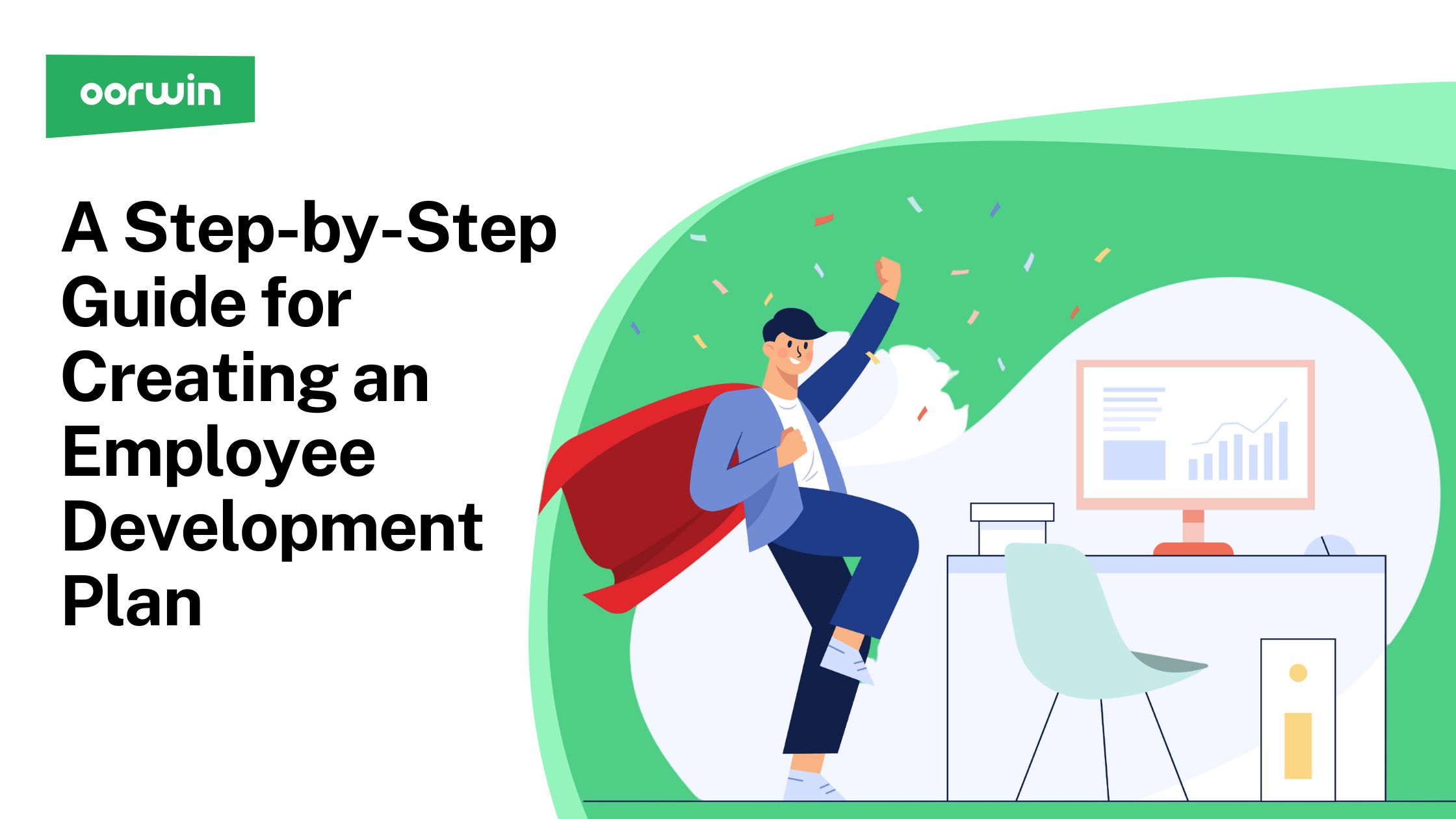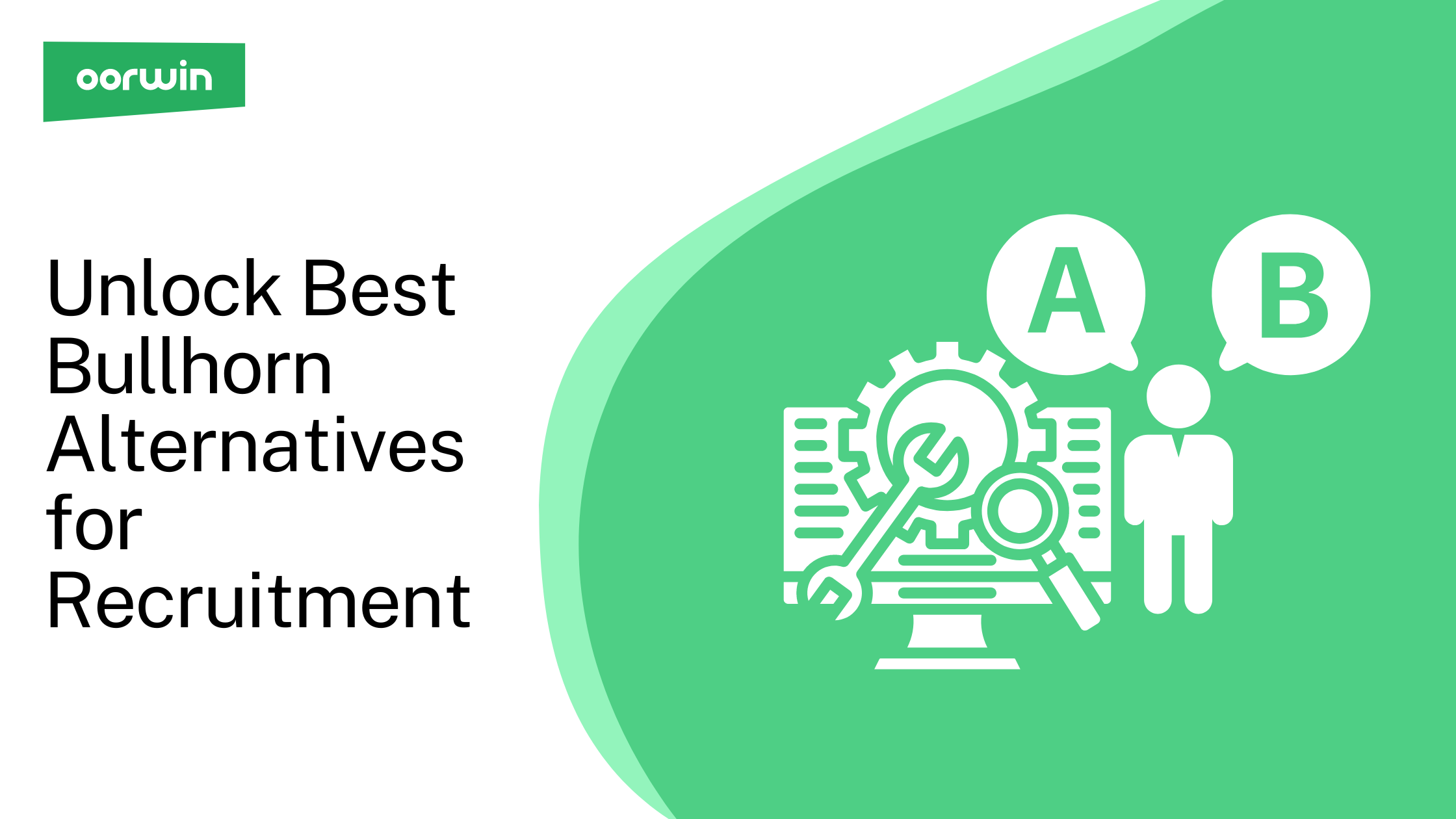A Step-by-Step Guide for Creating an Employee Development Plan
Oorwin
3min read / 17 Feb 2023
Understanding Employee Development
Employee development is the process of helping employees improve their skills and knowledge to become more effective in their roles. It involves providing employees with training, coaching, and support to help them achieve their career goals while contributing to the organization’s growth. Investing in employee development can yield significant benefits for the organization, such as increased productivity, employee satisfaction, and reduced turnover.
One essential aspect of employee development is creating an employee development plan. This plan outlines the steps and strategies employees and managers will take to improve skills and knowledge.
7-step Guide for Creating a Winning Employee Development Plan
Here is a 7-step guide that’ll enable your organization to create an effective employee development plan:
Begin by Analysing the Abilities Needed
Before creating an employee development plan, it’s important to analyze the abilities needed for employees to perform their roles effectively. This includes identifying the essential skills, knowledge, and competencies required for each role in the organization.
Identify Personnel for Leadership and Career Development
The next step is to identify personnel for leadership and career development. This involves identifying employees with the potential to take on leadership roles in the future and providing them with the necessary training and support to prepare for these roles.
Match Employee and Corporate Objectives
Employee development plans must align with the organization’s overall objectives. By matching employee and corporate objectives, employees will be motivated to pursue their development goals, knowing that their efforts contribute to the organization’s growth.
Help Them Develop With You
Once employee development objectives have been identified, it’s important to provide employees with the necessary resources to achieve their goals. Providing employees with the resources they need to develop their skills and knowledge can help them reach their full potential in their roles, leading to increased job satisfaction, higher levels of engagement, and better performance.
One way to provide resources for employee development is by offering training courses. These courses can be in-person or online and may cover various topics, such as leadership development, technical skills, communication, and time management.
Mentoring programs are another effective way to provide resources for employee development. Mentoring programs match employees with more experienced colleagues who can provide guidance, support, and advice. Mentors can help employees develop new skills and knowledge, build their networks, and navigate career opportunities within the organization.
Determine the Format of Your Training
When creating an employee development plan, it’s important to determine the best training format based on the plan’s objectives and the resources available to the organization. There are several different formats for training, including online courses, in-person training, and coaching, and each format has its advantages.
Online courses are a popular format for employee training, as they are often self-paced and flexible. In-person training is another format for employee training, which can be effective for more complex or interactive topics.
In-person training allows for hands-on learning, group discussions, and team-building activities. Coaching is a one-on-one format for employee training that can be particularly effective for developing leadership skills or addressing individual performance issues.
Use Employee Development Plan Templates to Help
When creating an employee development plan, it can be helpful to use templates as a starting point. Templates provide a framework for the development plan, making it easier to organize objectives and ensure that all critical areas are covered.
Employee development plan templates can be found online or through HR software. They typically include sections for identifying employee goals, outlining the steps to achieve them, and tracking progress. Templates can also include prompts for identifying skills and knowledge gaps, determining training needs, and setting timelines.
A template can streamline the process of creating an employee development plan, saving time and ensuring that all relevant information is included. Templates can also ensure consistency across development plans, making it easier to compare progress and identify trends.
When selecting a template, choosing one that aligns with the organization’s objectives and the employee’s career aspirations is essential. The template should provide a clear structure and easy-to-use format while allowing for customization and flexibility.
Monitor Progress and Make Decisions Based on Facts
Monitoring progress toward employee development goals is essential for ensuring that the development plan is effective and for making necessary adjustments. Regularly tracking progress enables managers to determine whether employees are on track to meet their goals, identify any obstacles hindering progress, and determine if the development plan is achieving the desired outcomes.
One way to track progress is to use data to measure key performance indicators (KPIs). KPIs can help measure the success of the development plan and provide insight into areas for improvement. Examples of KPIs include completion rates of training courses, improvement in performance metrics, or employee feedback on the development plan.
Importance of an Effective Employee Development Plan
An effective employee development plan is crucial for the growth and success of an organization. By investing in employee development, organizations can increase productivity and employee satisfaction and reduce turnover. Additionally, employees who feel valued and supported in their development are more likely to remain with the organization and contribute to its success.
Employee development plans also help organizations identify skills and knowledge gaps in their workforce, allowing them to provide targeted training and support to address these gaps. This, in turn, enables employees to perform their roles more effectively, resulting in a more efficient and productive organization.
An effective employee development plan is essential to organizational growth and success. By following the seven-step guide outlined in this blog, organizations can create a winning employee development plan that benefits both employees and the organization as a whole.
Frequently Asked Questions
What Is a Good Development Plan for an Employee?
A good development plan for an employee outlines the steps and strategies for improving the employee’s skills and knowledge. It should include objectives, resources, and a timeline for achieving the goals. The plan should also align with the employee’s career aspirations and the organization’s overall objectives.
What Is the Main Goal of Employee Development?
The main goal of employee development is to help employees improve their skills and knowledge to become more effective in their roles. By investing in employee development, organizations can increase productivity and employee satisfaction and reduce turnover. Employee development also helps organizations identify skills and knowledge gaps in their workforce, allowing them to provide targeted training and support to address these gaps.
Why Do Employees Need to Have a Development Plan?
Employees need to have a development plan to improve their skills and knowledge and achieve their career goals. A development plan provides a roadmap for employees to follow, outlining the steps and strategies for improving their performance and preparing for future roles. Additionally, employees who feel valued and supported in their development are more likely to remain with the organization and contribute to its success.
Popular Articles..
Blog
Blog
Blog
Get the latest Oorwin releases, updates, success stories & industry news
 Back
Back


